All imagery produced on V-Ray for Revit 6.10.04, and Revit 2024.2; V-Ray is a registered trademark and product offered by Chaos Software.

Introduction
It was around 2015 when I first learned V-Ray. Switching from Mental Ray in 3DSMax, it was a dream. V-Ray materials seemed to make more sense, seemed to render faster, and there was an aspect of realism and quality to the light that Mental Ray couldn’t capture– at least with my ability. After a couple years, I could manage my way around and create imagery that looked somewhat decent for my needs. My workflow was to model in Revit, and then export to 3DSMax. Utilizing FBX files allowed a somewhat expedited and useful connection with the materials staying the same, and this was enhanced when the FBX link was implemented.

Around 2020 Chaos Group added native support for Revit with integration directly into the program– essentially as an add-on. The first release was in V-Ray 5 (maybe 4?); V-Ray is now on version 6 at the time of this writing. And a lot more has changed than just the program version. In the last 4 years, I’ve gone from working at a 100+ person firm, to now out on my own, operating essentially as a one man show. As a ‘small’ studio I dont have the luxury of having in-house renderers or even the ability to pay exterior rendering firms, so I’ve kept utilizing and learning more about Revit V-Ray, as I push it to its limits producing renderings for clients. However, going on my own has also led me to a lot more realities of the money side to the business as well— no longer can I just know a V-Ray license will be readily available for my use with no cost to me– so now, I see ROI in a different light for the cost of subscriptions and programs.
It is really because of this that I felt compelled to write this article. Having used Revit V-Ray consistently for over 4 years now, and V-Ray in some capacity for about 10 total years, I have grown a big dissatisfied taste in my mouth with Chaos Software. This comes from the lack of development in the platform, as well as a poor pricing structure towards sole practitioners and smaller studios. This article will detail out my review of Revit V-Ray; the good, the bad, and alternatives to consider. When subjectively looking at Chaos V-Ray, its pricing structure and features don’t make much sense anymore, especially with so many great alternatives out there.
Revit V-Ray; The Good
Revit V-Ray is extremely quick to get up and running with, and right out of the box it doesn’t take much to create compelling imagery that can keep up with most other hobbyist renderers (non-professional renderers).
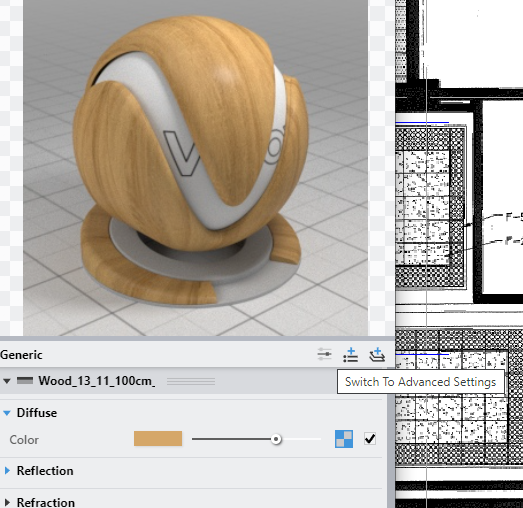
Speed & Simplicity
Revit V-Ray is extremely quick to implement, and within literally a couple hours you can be up to speed and learn a good deal of the program. Going from awful to decent, is extremely quick as there really isn’t too much to learn about. The simplicity of the program keeps everything very surface level… you don’t need to know different file formats; how to navigate a funky looking Slate Editor, where the correct bitmap should go for reflections, or really any of that confusing junk which can be intimidating when first starting out. In fact, the material (asset) browser has the ability to see ‘basic’ vs ‘advanced’ modes.
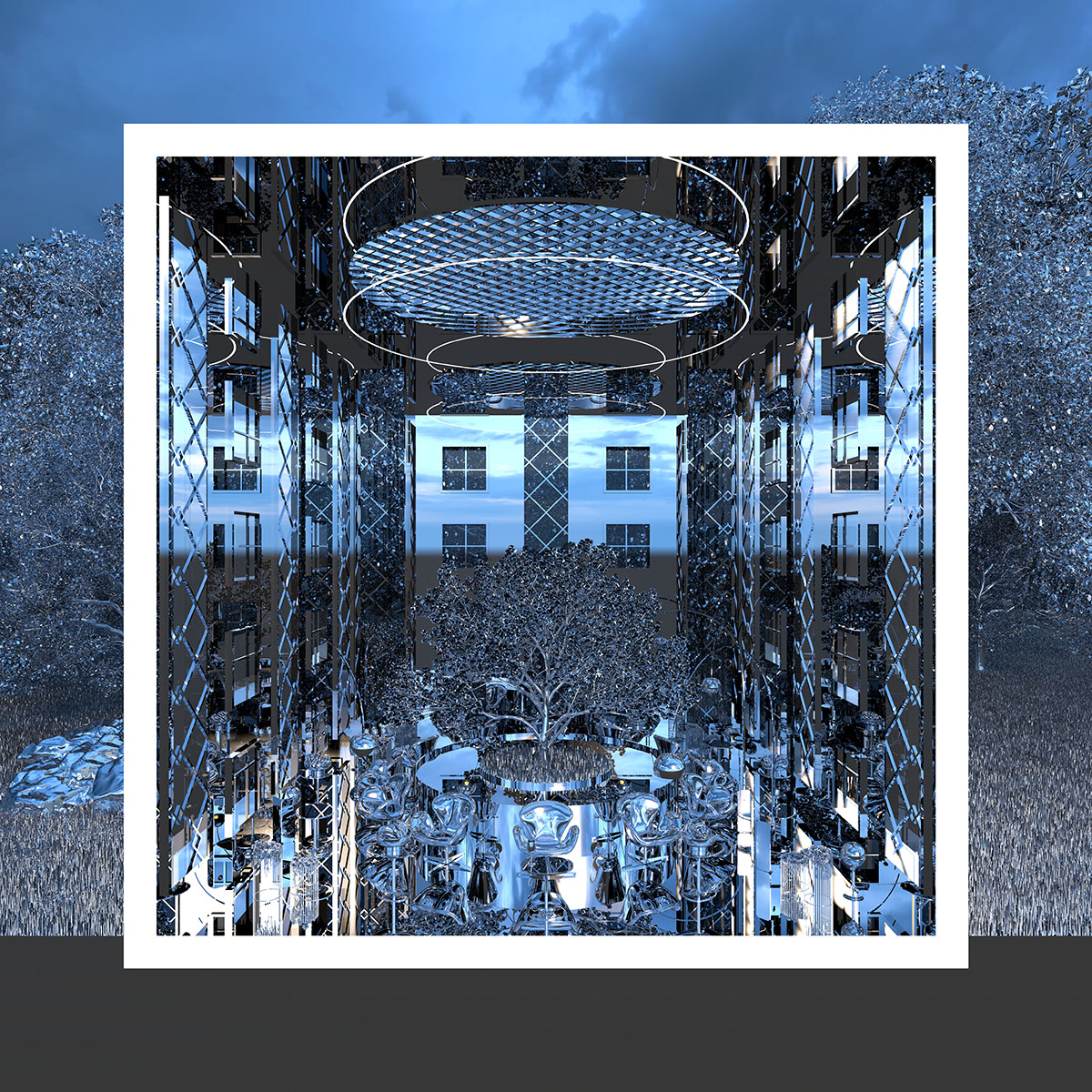



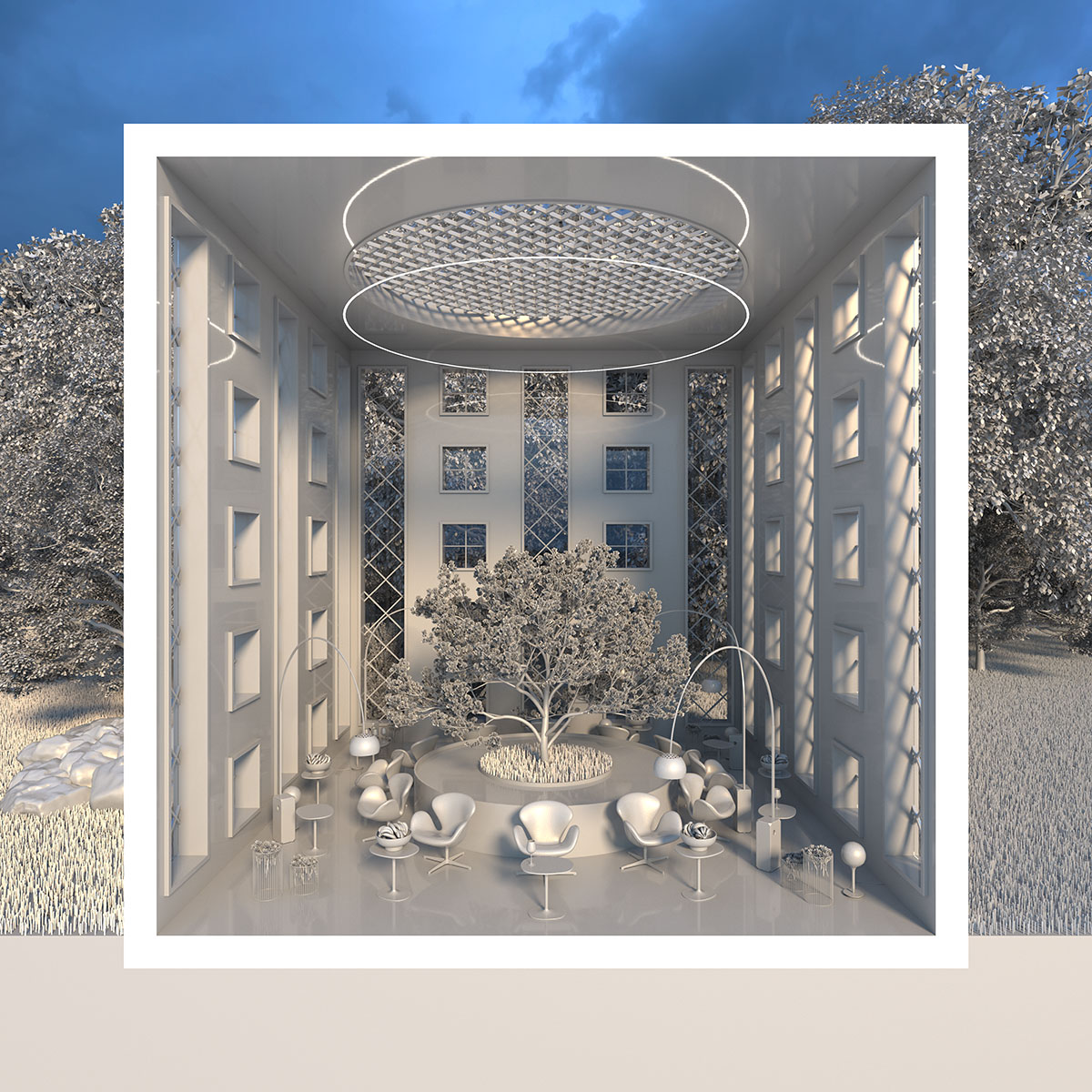


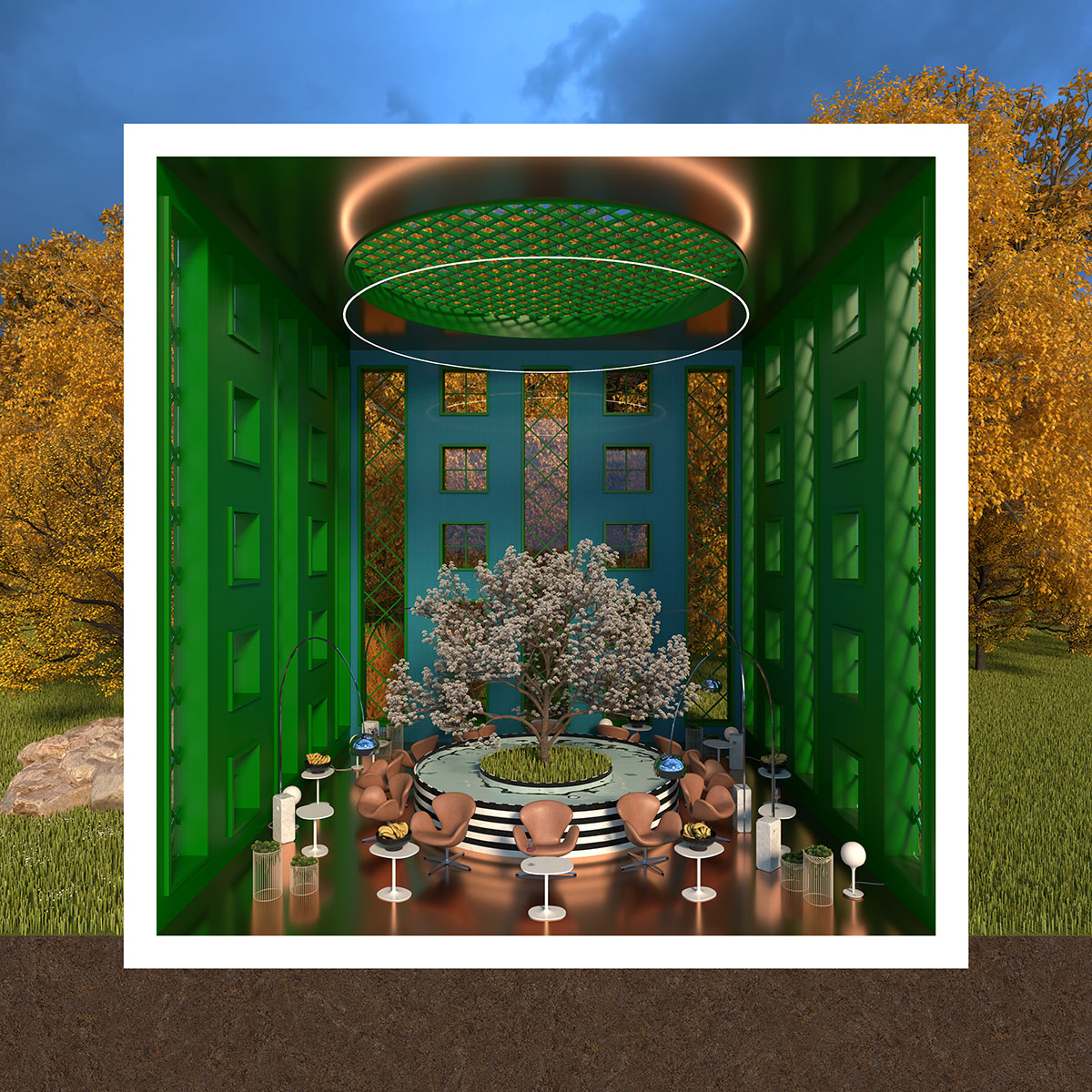
Documentation Preservation (No Double Modeling)
Probably the best pieces of V-Ray, and my favorite part is the fact that if you do it right… There is very limited interruption to the documentation process. For example, you map materials and replace them with V-Ray materials, meaning that your Revit material graphics needed for documentation will go unharmed. As you are presumably in Revit for the ultimate goal of producing a documentation set of some kind, this is imperative to not add speed bumps or go backwards in your process just to get a rendering– or worse, need to model the same thing in different programs doubling your production time. Placing assets or swapping them out is relatively easy if you keep it consistent… just create filters and turn off anything with ‘cosmos’ in the name, or other strategies work well.
Working while Rendering
One of the best features is that V-Ray seems to package up the model and send it to the renderer. This allows you to theoretically continue working within Revit on documentation or other items as the render completes. This is heavily subjected of course to your computer resources; however, I find myself working while it renders a fair bit of the time. It does cause Revit to lag, but as Revit in general is a laggy and bloated piece of software, the ‘extra’ lag is easy to ignore or rarely notice.
Assets
The asset library (known as “Chaos Cosmos”) was a bit rough at first, however it is quite extensive at the moment with over 4,000 assets to choose from. The usefulness of some of the assets is very questionable (more on that later), but they have a great sampling of trees, materials, and quite a fair amount of other objects.

Asset Swap
Similar to documentation preservation, similar to mapping materials, you are also able to map Cosmos assets to specific families. This means you can keep your chair with the correct graphics you might need for a furniture plan and schedules/tagging — but replace it with a high resolution renderable asset with materials. There is a big issue with how this is actually implemented (more on that later), but when it works correctly, you have the ability to hit ‘render’ while then ‘printing’ without sacrificing too much time or quality for one another.
All Versions Included
The one benefit of the Chaos V-Ray license is that you get access to all different V-Ray implementations. This means that even if you are only using Revit V-Ray, you also get access to V-Ray for 3DSMax. In reality this isn’t Chaos being nice, but is required– especially for those working in Revit V-Ray. For example, if you download a paid asset from CGTrader, 3DSky, or Evermotion– there will eventually be the need to delete objects, make modeling modifications, or perhaps create a .vrscene file for inclusion in Revit V-Ray. All of this you cannot do in Revit V-Ray.




Features
There are some great features such as scatter, over-writing, and scale. These however leave a lot to be desired, as their implementation and use is extremely limited and they need to be further developed to be of use in all situations. More on this in ‘the bad’ sections. Here you can see Trees using the scale and rotate settings for the Cosmos Norway Maple 28-04.
Channels
Just like V-Ray on the other platforms, there is the ability to export rendering channels. This is needed as you will always have to do a bit of Photo editing after the rendering, and the channels expedite masking and selections.




Revit V-Ray; The Bad
While quick and easy to get up and running with, the implementation of Revit V-Ray is extremely paired down. Revit V-Ray is essentially a very expensive rendering node with lots of assets. Many of the extremely useful V-Ray features in other more ‘render focused’ softwares like 3DSMax are missing from Revit –even those that would be considered ‘absolute musts’ for rendering software. The development for the ‘actual engine’ in general is also extremely slow and seemingly not prioritized with actual users.
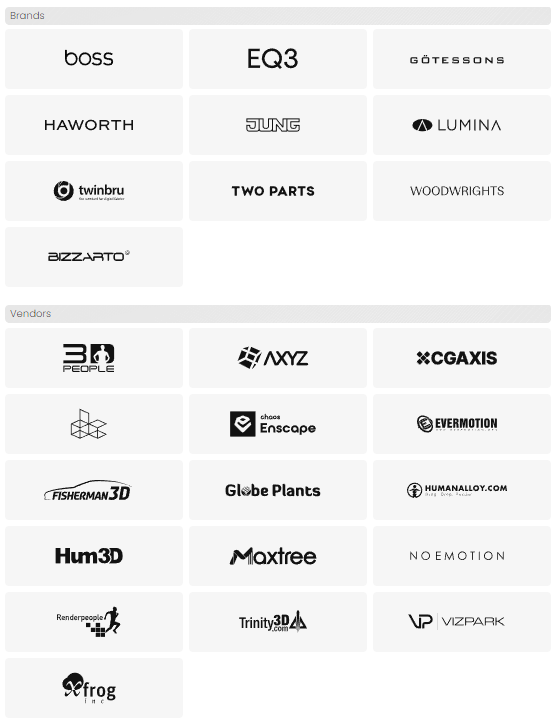
Limited Asset Functionality & Information
While earlier I stated that the asset library is quite large, it’s extremely limiting and difficult to know what you are getting. For example as you view a table, there is no information about the size of table, so your best bet is to download and load into the file, just to find out it might not work size wise. If you do find the table maybe is 4’x4’ and you need it slightly bigger, you are only able to scale in all coordinates and not simply scale X or Y with limiting Z scaling. This means you can adjust to make the table 6’ x 6’ (50% larger), however it’s also going to grow 50% in height and be completely unusable as an asset. The only place the scaling feature really shines is with vegetation as it allows great variety across a forest.
Assets Library Sacrifices Quality over Quantity; Limited Consistency
Chaos has done a lot in terms of adding assets to the library. When first released, there were only about 500 total assets (if I remember correctly), and now (at time of writing) there are over 4,000. This development trajectory estimates Chaos is adding an asset approximately every other day. However, digging into the assets more and using the library, there is a wide variety of quality and many issues you will discover.

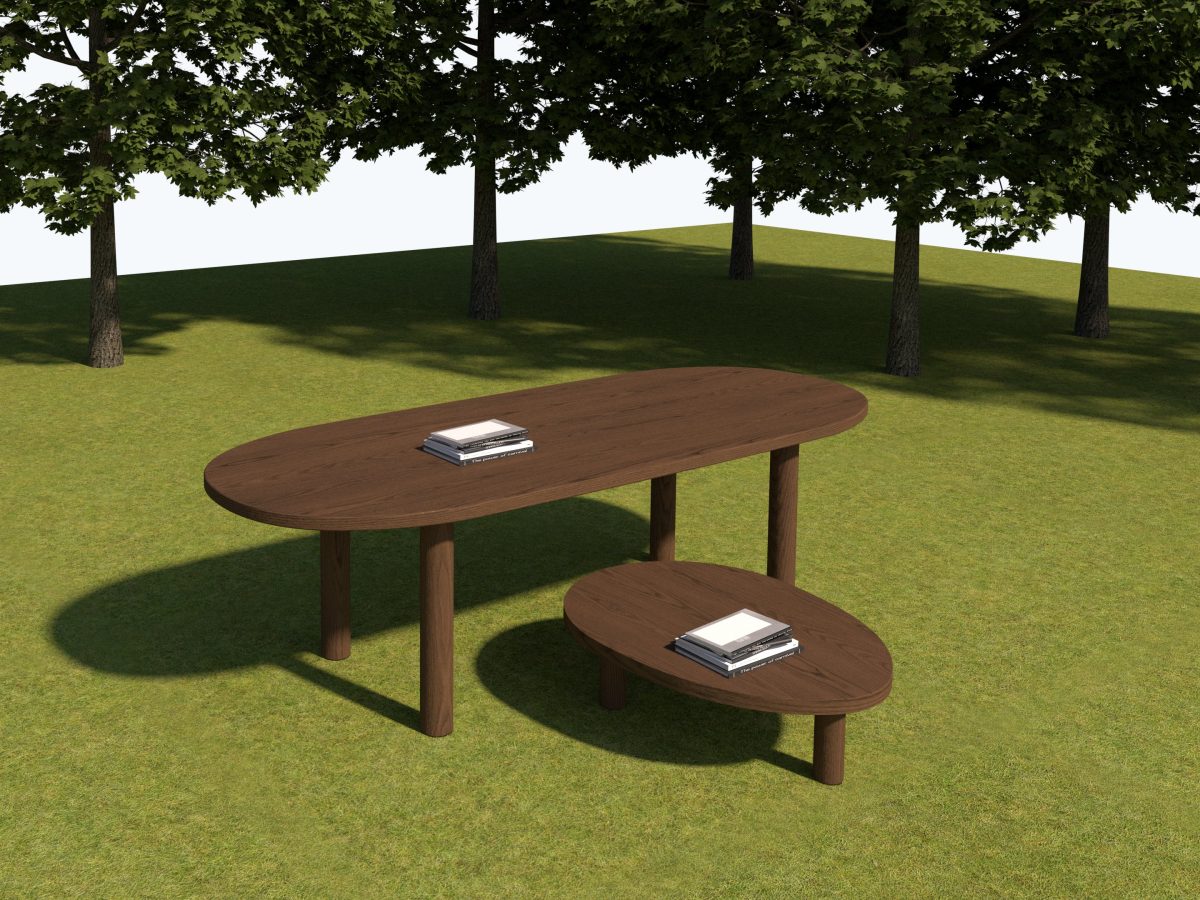
- It does not seem Chaos is developing most of the assets and instead the vast majority (if not all) are licensed or purchased (In the Chaos Cosmos and under “Creators”; at the time of the writing there were 16 different vendors listed.) This means while all the quality is ‘good’, there is a noticeable difference between some furniture pieces being ‘good’ and others being ‘great’. This is mostly negligible, but becomes glaringly obvious when situated next to each other in a scene.
- One frustrating thing is the inclusion of the Enscape library assets to Chaos Cosmos even though the quality is nowhere near where it needs to be for VRay.
- The different developers additionally means a lot of the items are all built differently. This leads to some objects hosting to face, while others host to floor (or are unable to host to the face of the object)– even if they are the same object type/group.
- See the books/magazine example above. Being able to host face-to-face (face hosted) is needed when placing the items such as tables where the offset from floor may not be exact. However, some are hosted to the floor, meaning you waste time trying to figure out the offset to a random table height (which as we stated before, should be labeled somewhere). This imprecision wastes time and creates inaccuracy.
Similar to the problem aforementioned, there is also a limited variety in sizes available for each design/object (with no ability to currently scale). Some sofas will show single, two and three seater variety options, however pieces such as tables, which should come in a variety of sizes are non-existent. It would be great if the table that is 4’ x 6’ also came in 3’ x 5’ or maybe a similar design in 5’ x 5’. Because V-Ray Revit doesn’t have the ability to edit these in the program, we ‘need’ the ability to scale or multiple options.


Quality Example
See here, a rendering test with 2 different couches. These are pretty bad and look more comfortable in the SIMs 2010 (vendor: CGAxis). It’s beyond frustrating to finally find an object that fits the right size or shape only to find out that upon rendering it’s not the high quality you come to expect. The quality deterioration is something that needs to be addressed.
Cosmos Search is Horrendous and Difficult to Navigate
As there are over 4,000 objects, a good search is imperative for the easy navigation of the asset library. It should be noted that 1,000 of the objects provided are material assets, most of which are relatively useless to the Architecture Visualization crew.
Tons of Fabric?
For example, out of the 1,000 that are material, 692 are of the “fabric” categorization. Architectural visualizations typically rely heavily on ‘hard’ spaces such as stone, tile, and wood. The fabrics do a great job of expanding the library to offer different versions when needed– it’s relatively painless to change a gray chair to a leather chair for example– but more expansion needs to be provided in architectural materials. It seems Chaos simply uploaded or ported over their library from their other platforms which maybe lean more heavily into product and consumer industrial design.
Tagging
Additionally there is no tagging or smart metrics to leverage in order to find what you need. There are categories such as “Outdoor Furniture” but this doesn’t at all tie into the search feature it seems. And if it does, it’s hit or miss.

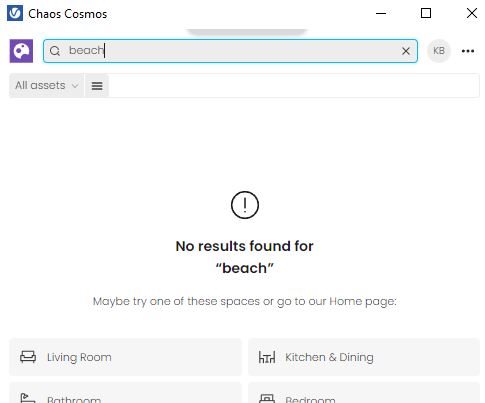

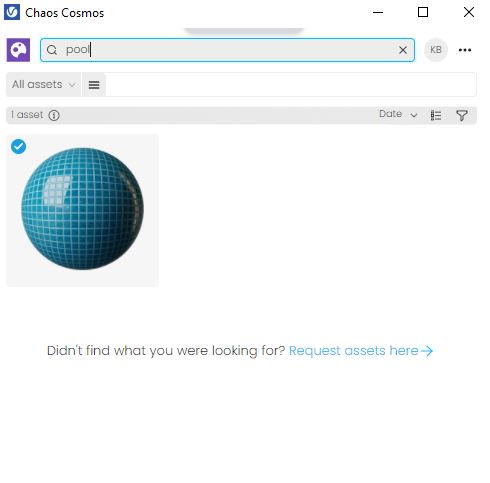
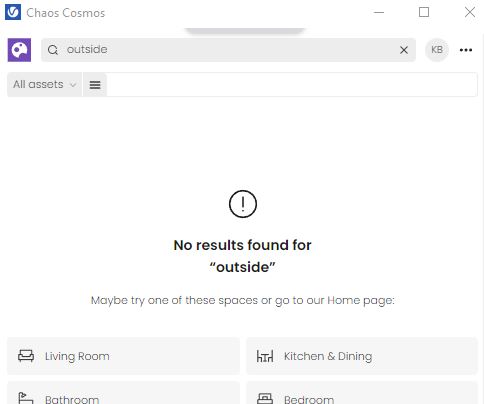
Pool Example
For example, let’s take a pool space for a multi-family residential. I want to provide lounge chairs, umbrellas, cabanas, side tables, exterior lounge seating, perhaps even some people in swimwear and would need materials like pool water. If I simply search “pool” – only one object shows up– a tile for the inside of a pool. Okay… I know there must be more. Lets search “outdoor” since I’m too lazy to click into the ‘outdoor furniture’ category… zero? The fact that “exterior”, “swim”, and “beach” also provide zero results is troubling. The amount of times I’ve searched through for objects and was not able to find what I need has wasted countless hours– sometimes even coming across those items (or perhaps better versions) at a later date and having to redo pieces.
Lack of Simple Implementation Controls
Override, Scale, Rotate, etc are great tools. However, the use and customization needs to be throughout for actual use cases and implementation; very simple functionality is missing. For example, if I have a dining table and 10 chairs, one thing I like to do is slightly mess up the chairs for renderings. This adds a bit of realism that is captured in the sense that perfection in lining up chairs will never exist. To do this, I rotate the chairs randomly throughout the screen. Using the rotation auto-tool, I am unable to rotate between -5 and 5 degrees. I can only rotate 0-10 or 350 to 360. This means that all the chairs will rotate only to one quadrant rather than still keeping the average centerline pointed towards its object. It’s these little features which are missing that prevent V-Ray from allowing good renderings to become closer to great ones (without manual effort).
- You may say place every object -5 off, however, when leveraging the furniture for furniture plans, this creates askew chairs in the furniture plans which is not desirable at all.
This also goes for the inability to scale in only certain directions (as aforementioned).
Missing Basic Camera and Modeling Functions
The Revit camera system is abysmal… we all know that. However, there are still features that V-Ray needs to port over from other V-Ray implementations that aren’t limited by the Revit camera system. Such as the ability to have objects not render, but still affect shading. Without this, you are unable to render floor plans accurately with sun shading shown. You are also unable to create interior camera shots without manually hiding objects like walls to be able to ‘step’ the camera back further. This makes all interior shots within V-Ray an extreme difficulty.
Enscape & V-Ray Extremely Limited Integration (And Still Two Costs $$$)
Chaos “merged” with Enscape. Enscape was leading the charge towards fast game-like environments you could walk around and experience in real time. I frequently found it to be amazing for understanding spatially how a space works, and it’s why I even introduced it to my past firm, convincing them to buy seats for it. It actually makes a lot of sense that Enscape and V-Ray would combine, knowing that Enscape can provide real time game-like environments, while V-Ray allows higher quality light algorithms that produce more final imagery. Essentially use one as a design tool, and another as a design communicator.

However, since combining, there has been very limited ‘real’ integration between the two. Chaos will retort this back and reference two recent webinars here & here. Though, when you watch these it becomes clear that the actual integration is simply allowing V-Ray to render poorer quality Enscape assets… which makes very little sense as it dumbs down V-Ray quality to Enscape level. When the imagery is actually good, it’s essentially replacing Enscape assets with V-Ray assets, which is a manual process and not what I would consider ‘integrated’ or an advancement, as this ability already exists.
Pricing
The pricing for V-Ray is abhorrent for non-professional renderers. It should be obvious at this point in time that Revit V-Ray is really a watered down version of V-Ray, providing limited rendering ability that once you work with for quite a bit, you will be knocking at the ceiling of its abilities. Realistically, Revit V-Ray is much more akin to a rendering node, rather than a full fledged program — and for this reason that the pricing for the program is absolutely insane.
I get it, Chaos needs to make money and it should charge what the market can bear– and it’s clear that the market is currently working; however, this pricing scheme illustrates a lack of compassion for a single person office (or small studio), and I have a prediction that they will lose their market dominance over the next 5 years more clearly as this is a narrow sighted strategy. As a small studio, it’s unlikely to always have the ongoing constant need for renderings. A monthly payment makes sense for someone like me and what I used to do (see below), but given the 50% discount, I’m not going to start/stop a license for 3 months twice a year when I can get constant and simpler annual billing.
The amount itself is hilariously high with recent year increases, despite minimal improvements to the engine for Revit specifically. When you compare it to other alternatives, it just is not making much sense anymore.


Price Gouging?
2021-09 to Now: ~100% Increase
Looking back at previous receipts I have, I was paying in September 2021: $60/month for a monthly license of V-Ray Premium (purchased monthly, not annually).
This was just 2.5 years ago… the price has gone up 100% since then! ($60 to $119.90) This is about ~40% per year for 2.5 years). Personally, I would gladly give up the “improvements” over the last 2.5 years to go back to a lower price. Even if this was for a V-Ray Solo, it still would be $60 to $85, an increase of 30% in 2.5 years.
Note that the 3 license subscription plans were introduced in December 2022 for V-Ray 6 release. My plan was converted to V-Ray Premium which it most closely resembled feature and access wise.
2023-03 to Now: ~10% Increase
Renewing in March of 2023, I paid for V-Ray Solo (annual cost) at $466.80. In just a single year, the price for the solo license has gone up 10%. This is insane and not sustainable price increases.
At time of writing this license cost is as follows:
| Product | V-Ray Render Node | V-Ray Solo | V-Ray Premium | V-Ray Enterprise |
| Notes | Allows distributed rendering only on a separate computer | Locked to one computer | Floating License; most popular | Minimum 5 license amount |
| Listed Cost Per | ||||
| Month (Paid Monthly) | $82.00 | $84.90 | $119.90 | $49.90 |
| Month (Paid Annual) | $17.33 | $42.90 | $59.90 | $598.80 / license |
| Savings per month by Annual | ~79% | ~50% | ~50% | n/a (annual only payment) |
| Total Annual Price Per License | ||||
| Yearly Cost (Paid monthly) | $984.00 | $1,018.80 | $1,438.80 | n/a (annual only payment) |
| Yearly Cost (Paid Annually) | $208.00 | $514.80 | $718.80 | $598.80 |
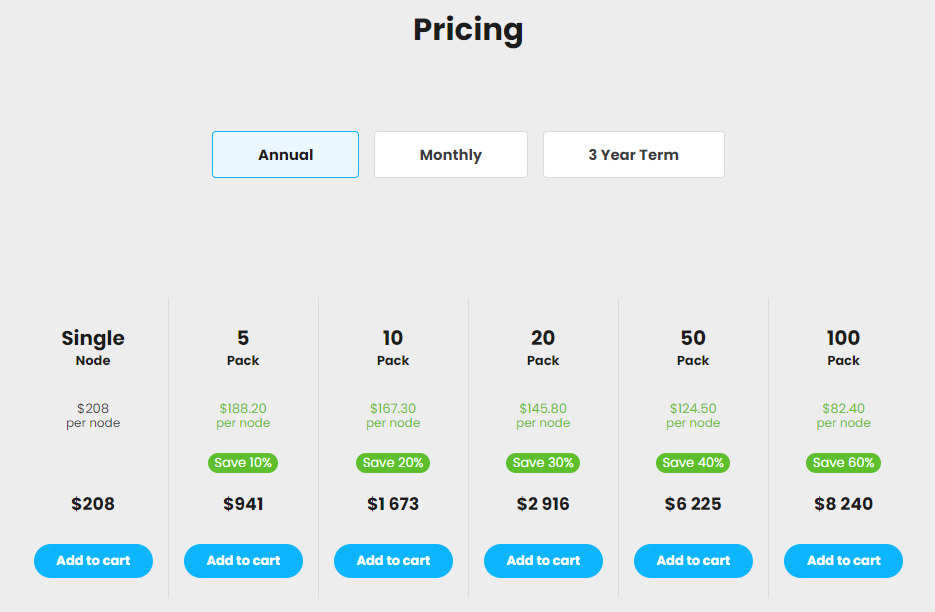
Annual Billing Solution
What would be nice is if they understood annual billing might be warranted for the discounts, but small studios may find it hard to bear the $1000 price tag of a V-Ray Premium + Node, especially if they need 2 licenses, or perhaps their Autodesk subscription hits at the same time, or whanot.
What would be smart is adopting Adobe’s Creative Cloud pricing strategy which allows you to lock in an annual contract but pay monthly with no price gouging strategy. For the monthly to be offered but at 100% cost premium, why even offer the monthly at all? All this is doing is putting the strategy clear that Chaos wants annual subscriptions, and doesn’t care how it gets it.

Small Business Planning
The pricing as-is, is really set up for big firms. It makes sense for them. Any firm about 100 people or larger is probably an enterprise account. Take the largest firms like Gensler or similar, and they have upwards of 200 seats (200 seats would be $120k/annually at enterprise cost). The price disparity makes it clear: enterprise offers floating licenses, all apps, for the cheapest annual cost to benefit the big players. Meanwhile these offices are so large, they can share resources with their rendering departments, other locations, and even some may be able to double down on the usage as global offices typically wont have similar workforces throughout the day— meaning they can sometimes get a 2 for 1 or perhaps more likely, a 3 for 2.
Where is the innovation?
This pricing is completely in contrast with an innovative approach like Unity. Unity gives the program away for free (no restrictions) with users who have revenue of less than 100k in the last rolling 12 month period. This is brilliant. It gets users– especially young ones like students and entrepreneurial professionals– using the platform without restrictions and embedded in the ecosystem. By the time they need to pay they have years of free use and experience and with revenue under 100k, the blip of money spent on the platform is well worth the cost.
The cost is also offset by the vast amounts of hobbyists who are able to use the platforms and put out great education content and resources. The community becomes the helpdesk and learning center.
Compare that to someone like myself who runs his own studio. As I’m starting out, I made less than $50k revenue over the last 12 months. At $1000 for the node + license (purchased the node to speed up rendering as I had a server to render on), this means I’m spending more than 2% of my revenue on a rendering program. This does not take into account the cost of professional fees & insurance, overhead, other programs like Revit, and much more. The metrics start to make this not make sense, and it’s because of that reason I am actively searching for other options, as I’m finding most former colleagues are too. This is all taking into account that I haven’t been able to consistently use the program since my time as a sole proprietor is divided between documentation, presentation, and client meetings.
What Are My Other Options?
Asking this in 2015 and the options were a bit limited. Not necessarily because they were limited, but because the quality of those options weren’t spectacular. However, in the last 10 years, these options have all become serious contenders that can easily surpass VRay on any platform – and all for fractions of the price if not free.
Blender (Open Source) Free
An amazing open source program, Blender has quickly become a behemoth due to its free cost, open source attitude, and general ability to do anything you could want. The only issue is learning how to model in the program which isn’t as terrible as it may seem– especially with a huge community of YouTubers putting out tutorials on just about everything you could need. If you are familiar with Rhino or 3DSMax, you should be able to pick it up somewhat quickly.
For someone like myself who does not want to document and render in two separate programs (this is really the only Revit V-Ray advantage) I have resisted Blender until now. Open Source company Speckle is solving this by creating a connector/link between Revit and Blender. You will be able to model in Revit, and control your rendering in the vastly superior Blender. As Blender is open source, there is a huge community of people also developing add-ins that extend its capability. Even the best paid plugins are tiny fractions of the monthly cost of V-Ray.
TwinMotion (Free to learn, Commercial: $750/year, $62.5/month)
Priced competitively, TwinMotion is part of the UnReal engine and built specifically for Architectural visualizations. Think of it as the functionality and speed of Enscape, with better assets and imagery possible closer to V-Ray. You will need an RTX card in order to raytrace the renderings for higher quality. An extremely easy to use editor, you can be up and running with TwinMotion within a couple hours through drag and drop materials and game-like navigation. Twinmoiton has the Datasmith Exporter which allows seamless linking between Revit and Twinmotion for quick visualizations that would be impossible to do with Enscape, V-Ray or Revit alone. Twinmotion is also free to learn, letting you get up to speed or even just test it out.

Unreal Engine (Free for Revenue under $1m USD)
When first researching Unreal Engine, the first thing you will see are the absolutely astonishing imagery that can be created. Used by everyone from large commercial movie studios to small indie developers, its potential and use is limitless. It does have a very steep learning curve as there is so much you can do in the program, it quite literally can be used to create visualizations, animations, and even games. The good news is that it’s completely free to use and learn while you get up to speed. For me, while Blender is the next immediate goal, UnReal engine will be the next step after that.
Recommendations For Chaos Revit V-Ray Improvements
In the meantime, what can Chaos do? Well there are quite a few simple changes that would make quality of life improvements for users, as well as maybe make me rethink this whole post. Realistically all this can be solved and figured out by hiring someone on the product development team who is an actual Architect or Designer using the program frequently. I’m not talking about a former BIM Manager, CAD Specialist, or Renderer. A real designer actively using the program.
Asset Improvements
- Provide innovative license structure that understands small business needs and therefore would stop small practitioners from seeking alternatives.
- Perhaps free license for revenue under x$ amount
- Simply allowing pay per month for an annual contract (with no price gouging).
- Investigate providing a cheaper license for Revit V-Ray users as it really is a ‘watered down’ version of V-Ray on the whole. This would require the ability to edit .vrscene and models in 3DSMax or another program of the user’s choice. For example, $20/month (annual contract) for Revit V-Ray + one editing (no rendering) program of choice.
- The ability to scale X or Y or Z separately from just ‘scaling’ all together as a whole.
- Provide another image on the assets that show dimensions. For objects like tables this should show length x width as well as height.
- This should also be searchable text for each asset. If I want a table, I should be able to filter for tables of a certain size.
- Clean up all origin points to be consistent. It would make most sense for all tables to have an origin point on the floor and center/center, however, it’s more important to be consistent.
- Perhaps the easiest way to implement a fix would be to allow origin changes within the Cosmos Browser.
- Allow lighting fixtures (or any family category for that matter) to be replaced/swapped by the family browser.
- Currently it seems limited to Furniture (haven’t tested all of them at this point).
- Object specific instance ability to be hidden/still cast shadows/still cast reflections.
- Allow asset grouping for large changes and control.
- Placing all furniture like chairs into an asset tag/group so that I can rotate them all the same amount, just by adding them to the tagged group. Currently you need to select each one individually.
- Allow scatter to either detect collisions to prevent them — Additionally the ability to have the edges of the scatter set boundary be offset to.
- Introduce tagging or better ability to search the Cosmos browser to speed up finding assets.
- Also introduce a ‘don’t show me ever again’ option for assets. 50% of the assets I know I will never use, regardless of what the program or project is. They are either just bad quality, or bad design.
- Stop listening to larger firms only for asset development and needs. Healthcare workers were added in a recent update. The only people doing healthcare are huge firms who have teams of renderers or are paying for external renderings. This was a poor addition to the platform that benefits a very small user base.
- Focus on expanding architectural visualization specific materials.
- As mentioned, hard materials like stone, wood, metals, etc.
In Conclusion
So Who is Revit V-Ray For?
Revit V-Ray is a confusing product in general. The limited ability of the program really means that no professional renderers would ever even remotely consider using it over something like Rhino or 3DSMax… however its pricing is consistent with those use/programs. Really it seems there was the ability to make V-Ray for Revit and one day it was added as an ‘option’ to provide its customers. The primary and main use case seems to be exactly who I am– a small studio trying to streamline their design communication by allowing ‘good’ and fast renderings. Ultra realistic isn’t needed, and its priority is to be quick while staying out of the way of the documentation.
However, the pricing does not reflect this. It’s pricing it as if it is an end all be all, and as someone who has been using it for 4 years now (and used V-Ray on other platforms), I have completely (and frustratingly) hit the ceiling with its abilities. Not only is it overpriced for me, but it simply cannot do what I need it to do anymore– I am no longer growing.
The Future?
I’d be very curious to learn about actual use numbers, as I do assume they are very low. This would be exemplified by the lack of actual innovation or development for the engine and a focus seems to be on more development for Sketchup, Rhino and other platforms.
It would be great to see Enscape and V-Ray acting more as one company. However, they are still separate costs with no reduced price add-on (purchase V-Ray and get Enscape half-off!)— this is simply a greedy ‘hope they stay on both’ strategy. And it’s for this reason I can imagine that they will truly never integrate the two platforms. They do not want V-Ray to take customers away from Enscape, and vice-versa.
With the recent pricing increases, I have spoken to friends and firms who are all actively looking at alternatives. The question “do we really need this” starts to be asked more now. I unfortunately see a future where V-Ray drops Revit as a supported platform due to software development costs and potentially low user base– especially as Blender, Unreal and the others become more easily integrated with BIM platforms.
As for me, I’m actively learning Blender at the moment. I am still using VRay at the moment, while hoping that one day soon I’ll be able to flip a switch and port my workflow over to Blender.






Leave a Reply
You must be logged in to post a comment.